Why Do Dogs Drool Around Puppies? [Explained]
Dogs have a unique way of communicating with their surroundings, and one such interesting behavior is drooling around puppies. Many pet owners may wonder what causes their older dogs to suddenly become a drool factory whenever a new pup is introduced to the home. This article will delve into the reasons behind this slobbering phenomenon, allowing pet owners to better understand their canine companions.
One primary reason behind this behavior is stress and anxiety. Adult dogs can experience a range of emotions when a new puppy enters their territory, causing them to manifest physically through drooling. By examining these reasons, pet owners can better assist their dogs in adjusting to the newest member of the family and put an end to those messy puddles.
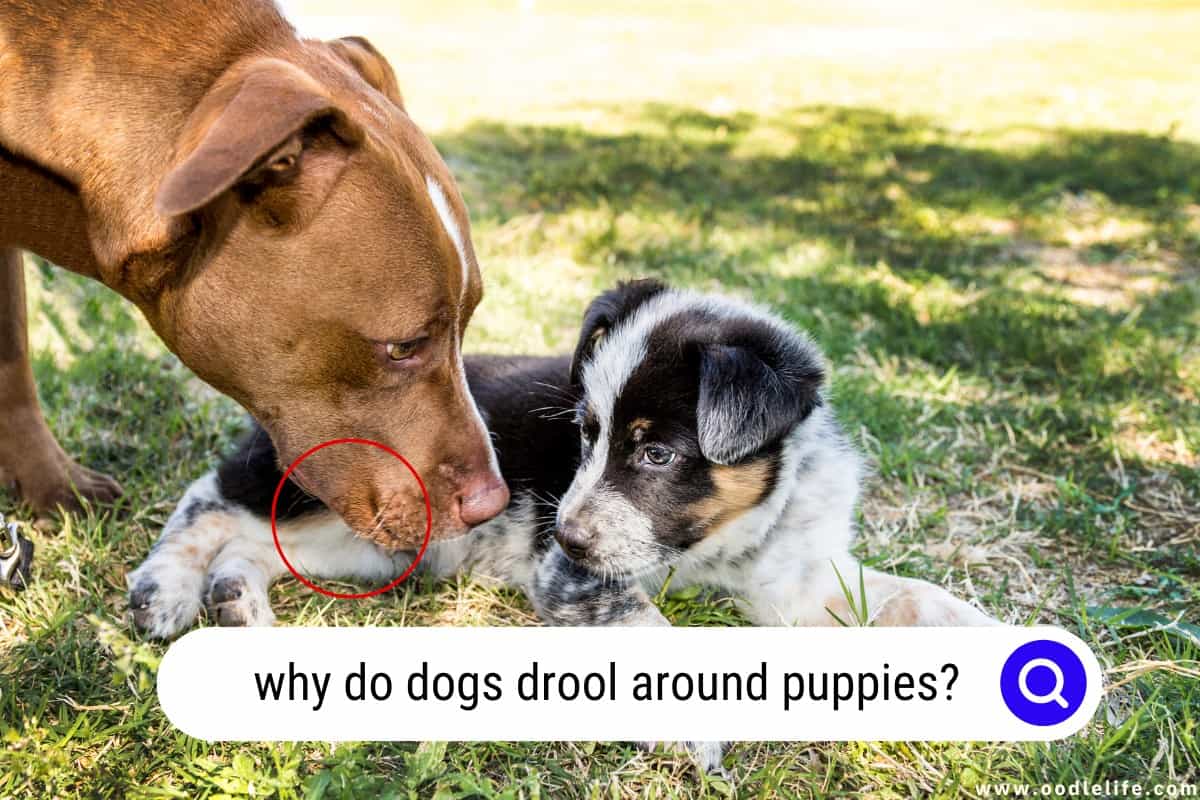
In the coming sections, we’ll explore other factors contributing to this excessive drooling, such as territorial behavior, protectiveness, and uncertainty. Armed with this knowledge, pet owners can help their dogs navigate their complex emotions and create a harmonious environment for all furry family members.
Why Dogs Drool Around Puppies?
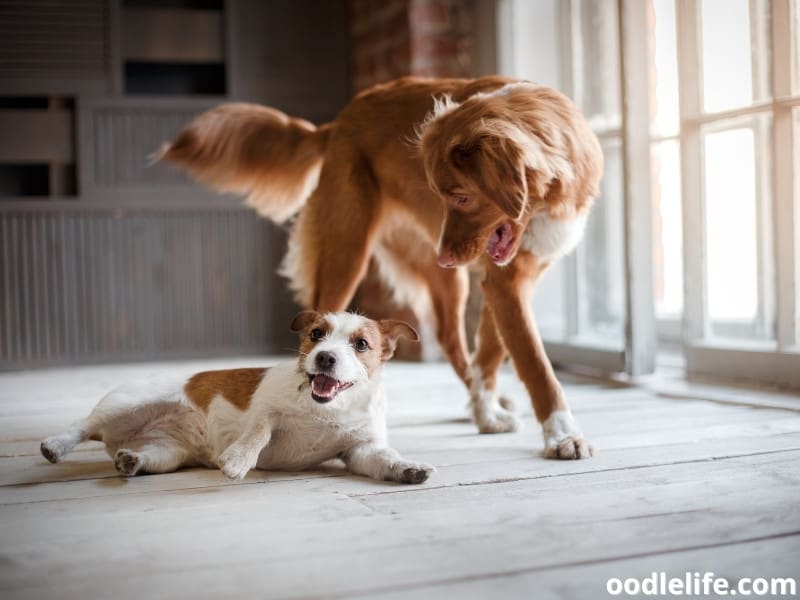
Stress and Anxiety
Dogs may drool around new puppies due to stress and anxiety. Imagine your world is suddenly invaded by a tiny, furry ball of energy – it can be quite unsettling. Our canine friends can sometimes get territorial, protective, and uncertain about the new addition to their family.
As their nerves get the better of them, they might start drooling excessively. For example, Sherlock the Golden Retriever drooled a lot when he first met a friend’s pup. Don’t worry; drooling usually subsides as your dog becomes more comfortable with the new family member.
Excitement and Attention
New puppies come with a lot of excitement and attention. It’s like Christmas morning—but with fur! This excitement can trigger overexcitement and drooling in our resident dogs. Just like every dog loves a good belly rub, some can’t resist the excitement of a new puppy in their midst.
You might notice your dog panting, whining, or wagging their tail furiously as the slobber starts to flow. It’s endearing and messy, like a canine rom-com, but with more saliva.
Sexual Attraction
Dogs may also drool around new puppies due to sexual attraction. Once the smell of pheromones hits their noses, some dogs might start drooling like a leaky faucet. It’s nature’s way of saying, “Hey, let’s make some adorable puppies!”
This is especially common when another dog in your house is in heat. Keep an eye out for other signs like growling, aggression, or over-excitement.
In conclusion, dogs drool around puppies primarily due to stress, excitement, and sexual attraction. It’s like a love-hate relationship, with a little bit of drool for good measure. Just remember to be patient with your dogs as they adjust to their new fur-sibling and keep a towel handy for those slobbery moments.
Breeds Prone to Drooling
It’s no secret that some dog breeds are more prone to drooling than others, especially when in the presence of puppies. Let’s take a closer look at a few such breeds and understand what makes them slobber all over their little furry friends.
Mastiff
Mastiffs are famous for their drooling, but you could call it a flaw with character! These gentle giants possess loose, droopy jowls that make holding onto their saliva nearly impossible, especially when around puppies. The sight of a huge Mastiff licking its chops with a trail of drool isn’t uncommon when a new pup enters the scene.
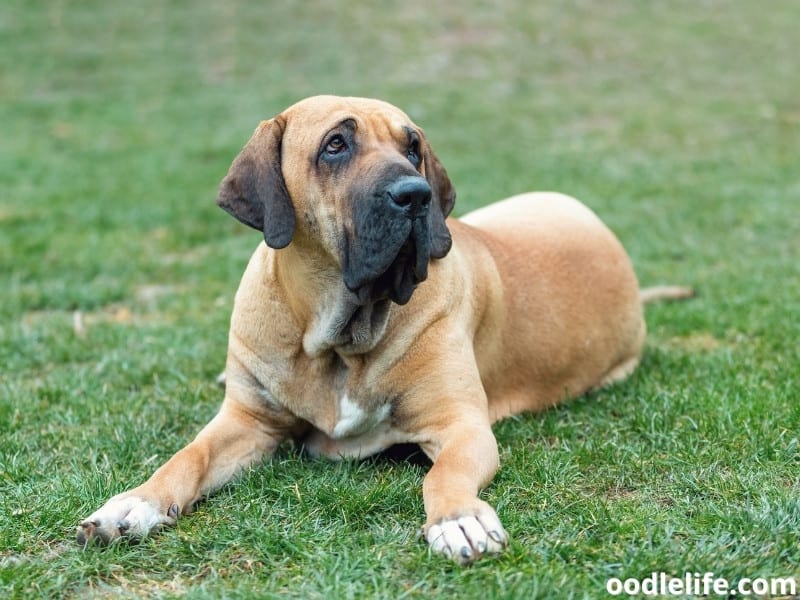
Bloodhound
Next up, we have the famous drool-ridden Bloodhound. Yes, the renowned detective and scent-tracker is also known for its impressive saliva trails. Similar to Mastiffs, the loose skin around the Bloodhound’s mouth contributes to their natural drooling, especially when they’re excited to meet a new pup.
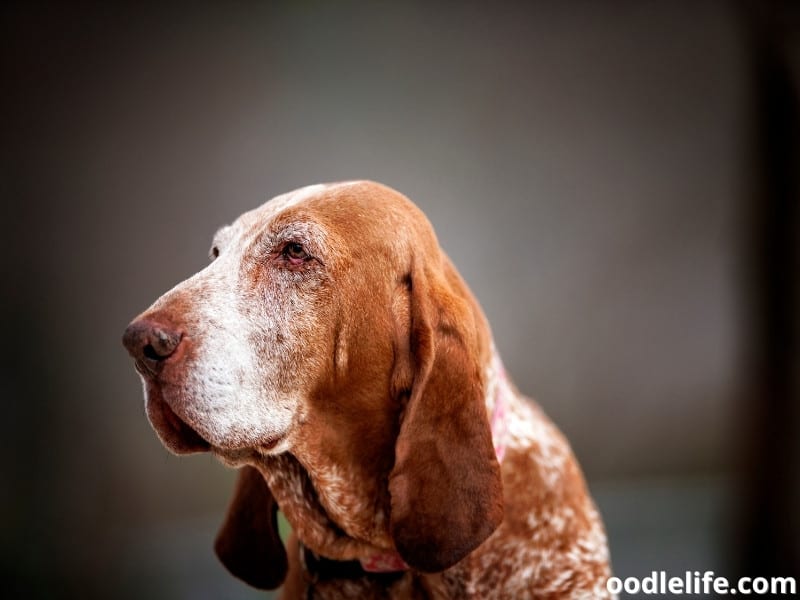
Saint Bernard
Cue the famous scene from Beethoven – a Saint Bernard shaking its head and splattering drool all around! These gentle giants are also susceptible to drooling as a result of their loose jowls. Puppies seem to have a magical effect on Saint Bernards, often engaging their saliva factory as they play and interact with their smaller counterparts.
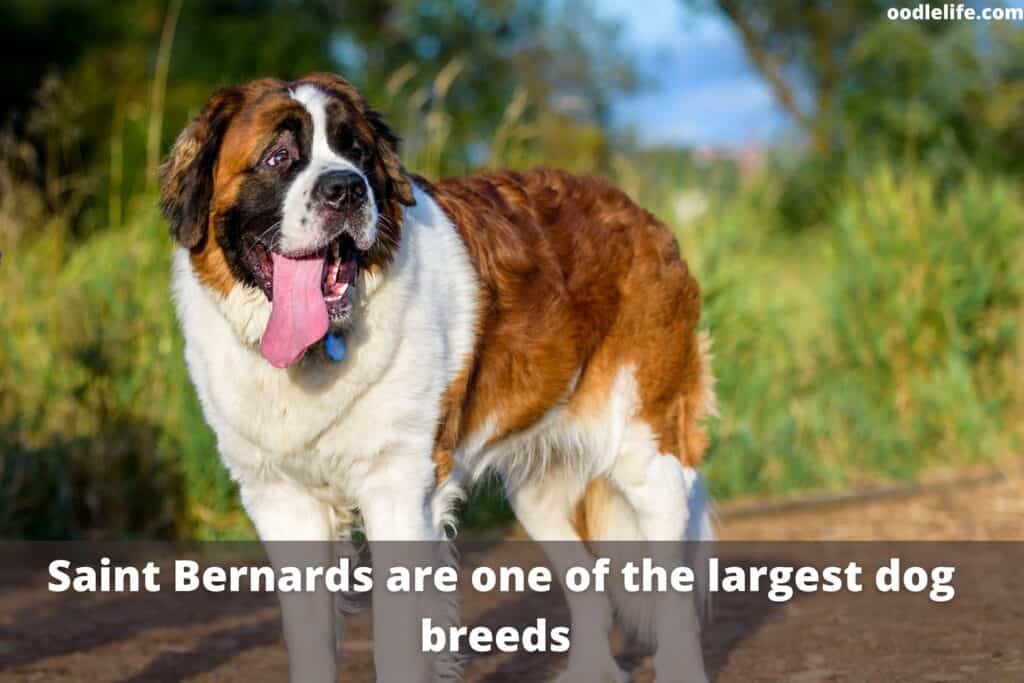
French Bulldogs
Lastly, French Bulldogs, also known as “droolers in tiny packages.” While these smaller companions may not drool to the same extent as the previously mentioned breeds, their adorable smushed faces make them prone to drooling, especially around puppies. A French Bulldog with some extra drool can make for a heartwarming, albeit slightly damp, encounter.
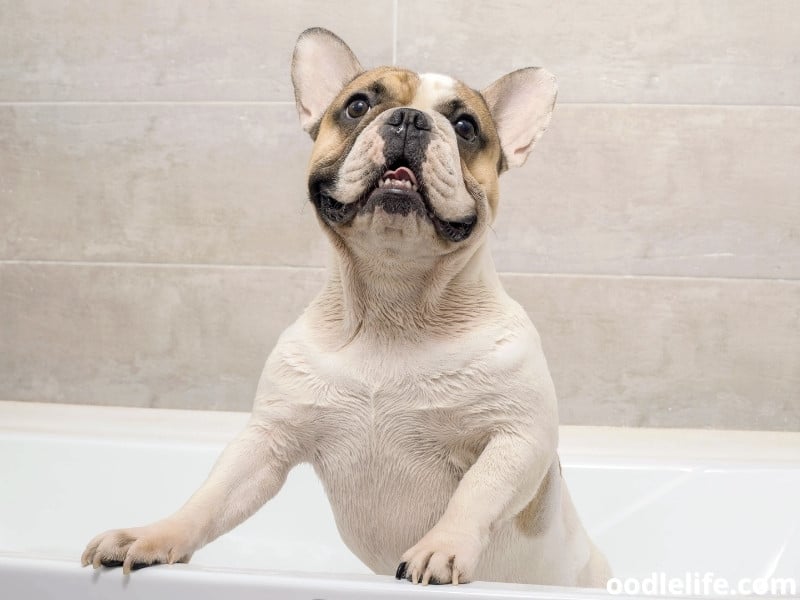
So there you have it, folks. These four breeds may leave you reaching for a drool cloth when around puppies, but their endearing qualities and lovable personalities more than make up for the extra clean up. After all, a little drool never hurt anyone, right?
Medical Issues Related to Drooling
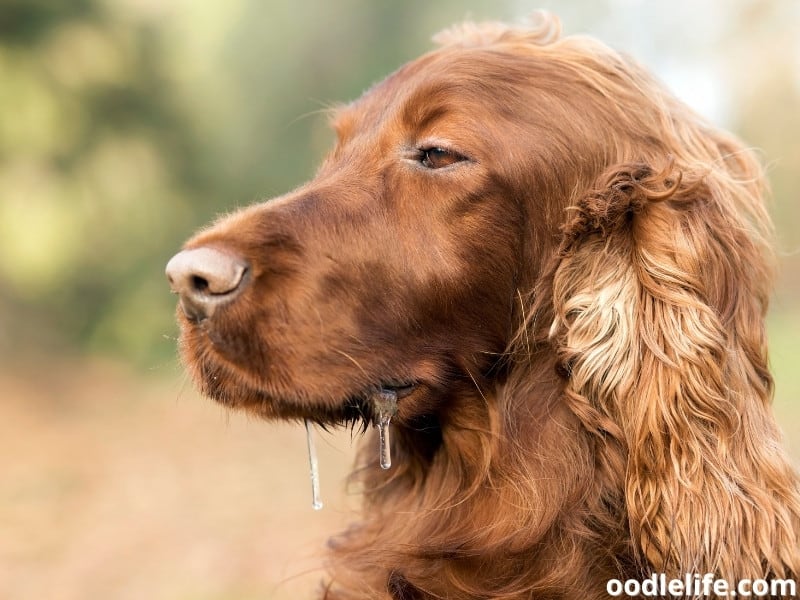
Infections
Infections in a dog’s mouth, throat, or respiratory system can cause excessive drooling. For instance, if Fido has a gum infection or abscessed tooth, it could lead to poor appetite and increased salivation. It’s essential to regularly check your dog’s mouth for signs of infection or inflammation and consult with a veterinarian if needed.
Foreign Bodies
Foreign bodies lodged in a dog’s mouth or throat, like a splinter from a chewed stick or bone, can cause discomfort and drooling. Dogs are curious creatures and may investigate the world with their mouths. Be mindful of what Buster chews on, and if you suspect a foreign object is causing your dog’s drooling woes, consult your local veterinarian.
Rabies
Rabies, though rare, can cause excessive salivation in dogs. If your pooch has been in contact with wildlife or an unknown animal and starts drooling, it’s essential to visit a veterinarian promptly. Rabies is preventable through vaccination, so be sure your dog is up-to-date on their shots.
Liver Disease
Liver disease can cause nausea and poor digestion, which often leads to drooling in dogs. If Rover is producing extra saliva, has a lack of appetite, and showing other signs of liver disease, it’s essential to have them checked out by your trusted veterinarian.
Tumors
Tumors, whether malignant or benign, can cause inflammation and discomfort in a dog’s mouth, leading to hypersalivation. If your dog starts to drool more than usual, consult with your veterinarian to rule out any underlying health problems.
Dental Diseases
Dental problems, such as tartar buildup, gum disease, or tooth decay, can cause discomfort and drooling in dogs. Regular dental check-ups and cleanings are essential to prevent such issues. Remember, a healthy mouth is a happy mouth!
Respiratory Problems
Respiratory issues, like infections or allergies, can lead to increased drooling as your dog may find it difficult to swallow. Pay attention to any changes in your dog’s breathing, coughing, or sneezing and consult with your veterinarian if needed.
Keeping your dog’s environment clean and free of allergens, as well as timely vaccinations and regular vet check-ups, can help maintain their overall health, lessening the chances of excessive drooling due to medical issues.
Introducing a New Puppy to the Household
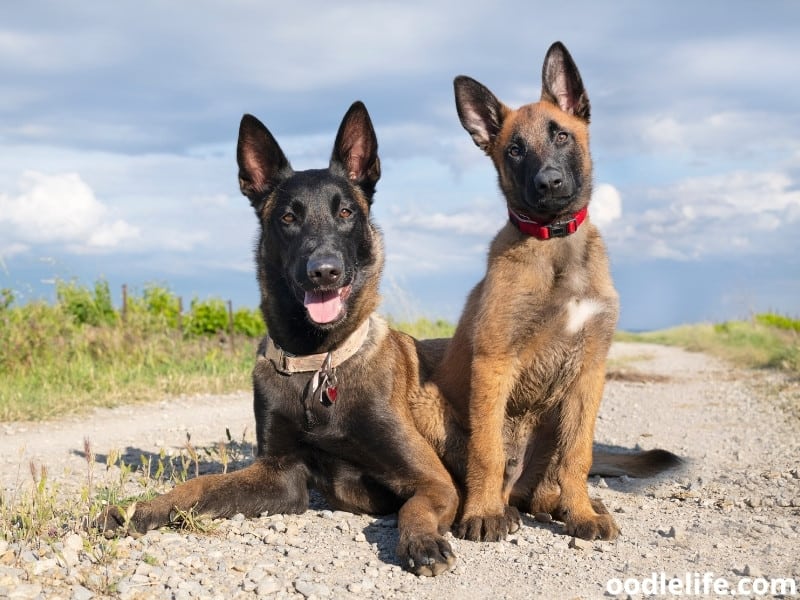
Socialization
Introducing a new puppy to the household can be an exciting yet nerve-wracking time for both you and your resident dog. It’s essential to focus on socialization to create a positive experience for everyone involved. Socializing your pup with the adult dog should be done gradually to prevent overwhelming them.
For example, you could let them play together in the safely-fenced backyard, under your watchful eye. Try adding a sprinkle of humor by inviting over that one French Bulldog from the neighborhood – a delightful energy booster to lighten the mood!
Resident Dog’s Reactions
As the adult dog in the house, the resident canine might display various reactions when meeting the newcomer. One common reaction is drooling, which could stem from stress, excitement, jealousy, sexual maturity, or even a medical issue. It’s not uncommon for an adult dog like Golden Retriever Sherlock to drool when introduced to his friend’s new pup.
Dogs, like humans, can become anxious when faced with change, so make sure to be patient and allow them time to adjust.
Preventing Excessive Drooling
To mitigate excessive drooling, ensure that the introduction process is as stress-free as possible. Keep in mind that pacing is key; don’t force interactions if either dog seems uncomfortable. Additionally, monitor your adult dog for any potential medical issues that could be contributing to the drooling.
- Gradual socialization: Introduce the dogs on neutral territory or through controlled interactions.
- Provide personal space: Allow each dog their own area for retreating and relaxing.
- Positive reinforcement: Reward good behavior and help reinforce calm interactions between the dogs.
Introducing a new puppy to the household may test your patience, but with some humor, perseverance, and a clear understanding of both dogs’ needs, you’ll eventually see your adult dog and new puppy bond. Like humans adjusting to a new roommate, canines too will learn to coexist happily in their shared furry paradise.